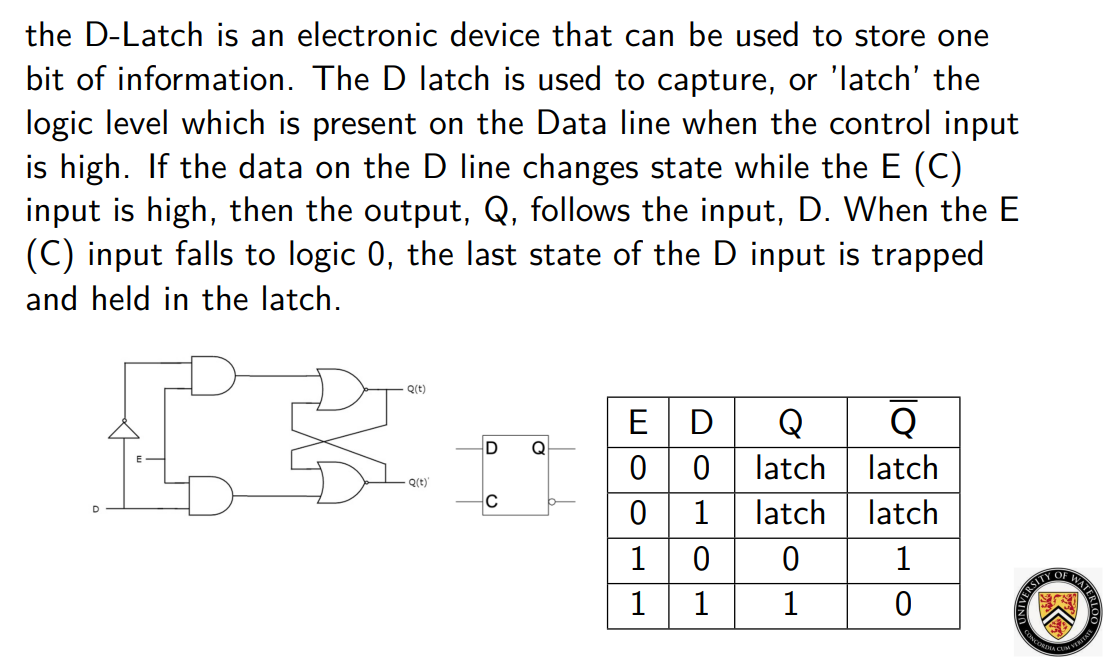Latch
A latch is a basic storage element. It’s one type of storage element in digital circuits.
Latches are level sensitive, meaning that they operate:
- when a Control Signal is at either logic level 0 or 1
- NOT at logic transitions from 0→1 or 1→0
- On the other hand, Flip-Flop are edge-triggered
They are:
- useful for Asynchronous Sequential Circuits
- helps to understand the behavior of flip-flops (another type of storage element which is useful for clocked sequential circuits).
Active High vs. Active Low
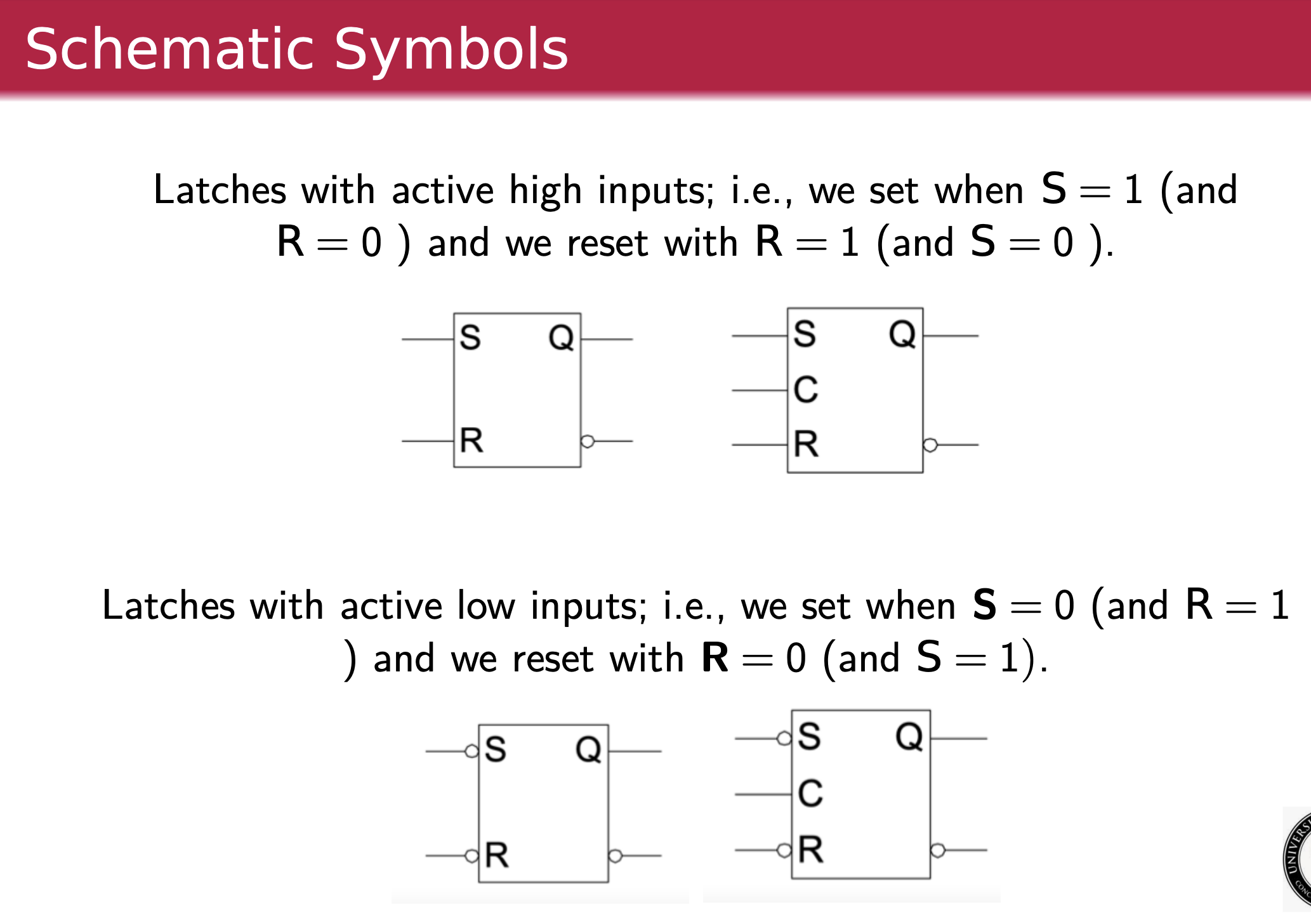
Types of Latches
SR Latches
2 Inputs:
- R - Reset
- S - Set (sets Q to either 1 or 0), i.e.
- If S = 1, Q = 1
- If S = 0, Q = 0
There are several limitations with the SR Latch. Because we can set this at anytime, we can possibly accidentally reset stuff.
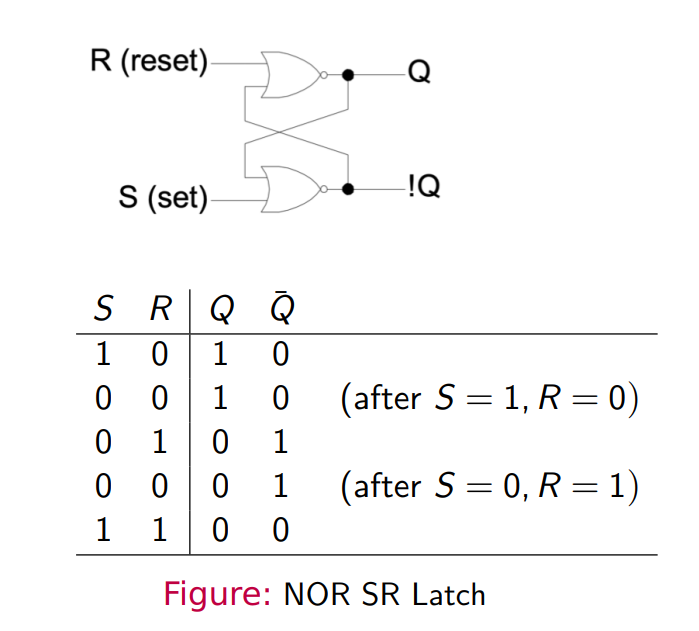 Case #1: S = 1, R= 0
Case #2: S = 0, R = 1
Case #3: S =1 , R= 1 does not work
Case #1: S = 1, R= 0
Case #2: S = 0, R = 1
Case #3: S =1 , R= 1 does not work
Afterwards, you go to S=0, R=0, to make sure that the memory is stored.
NAND SR-Latch
We can also use NAND instead of NOR.
A NAND implementation works similar to the NOR implementation, but the input values are reversed for each of the different cases. content…
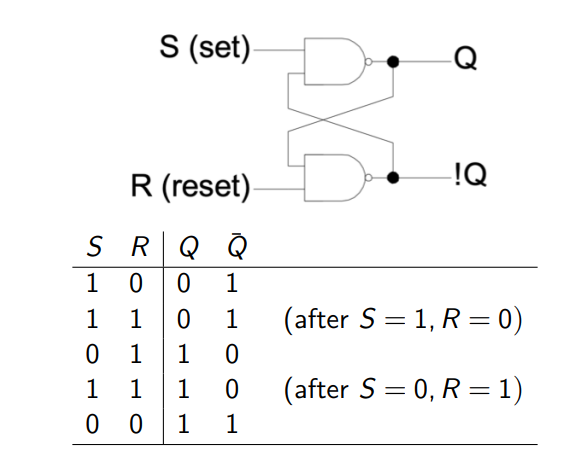
Gated Latches
Add a control input.
If C is enable all the time, it just becomes a level trigger all the time and this simply operates like a SR Latch. However, if we make C a clock.
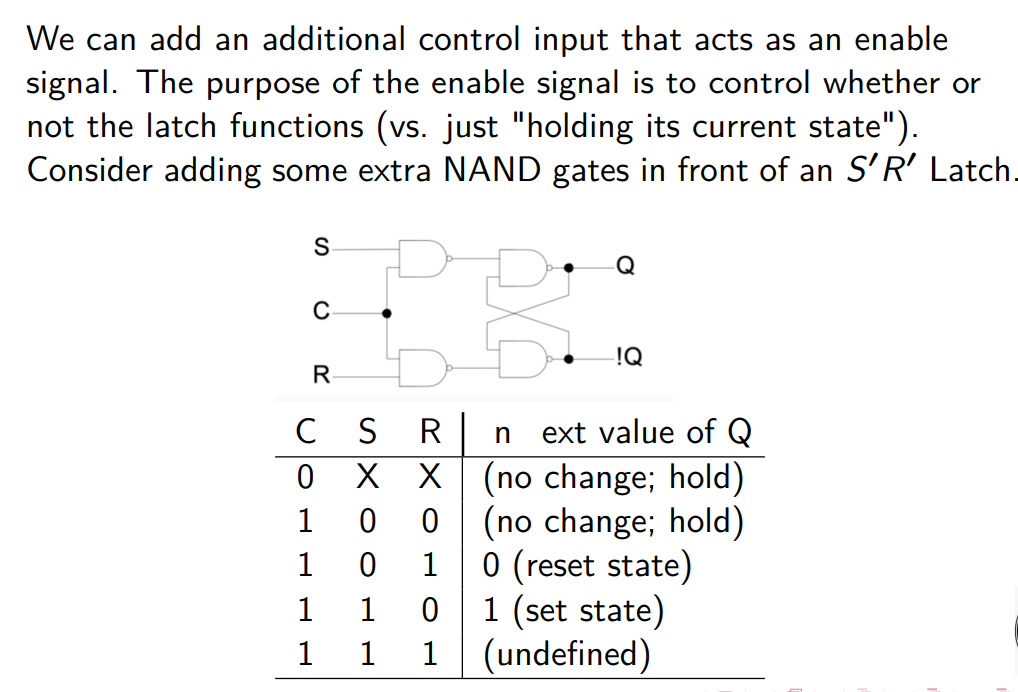
D-Latch
This is also known as a transparent latch.
